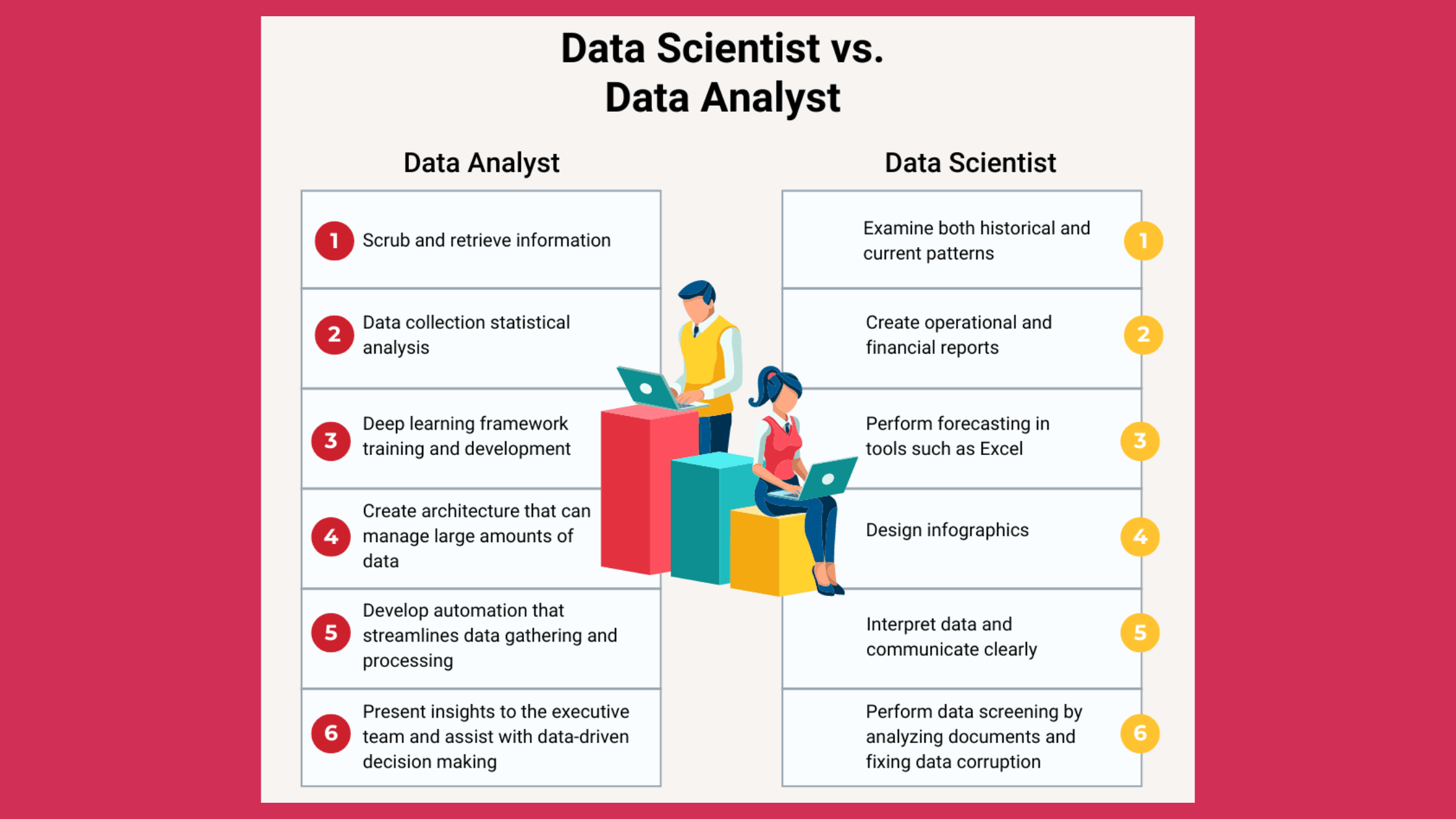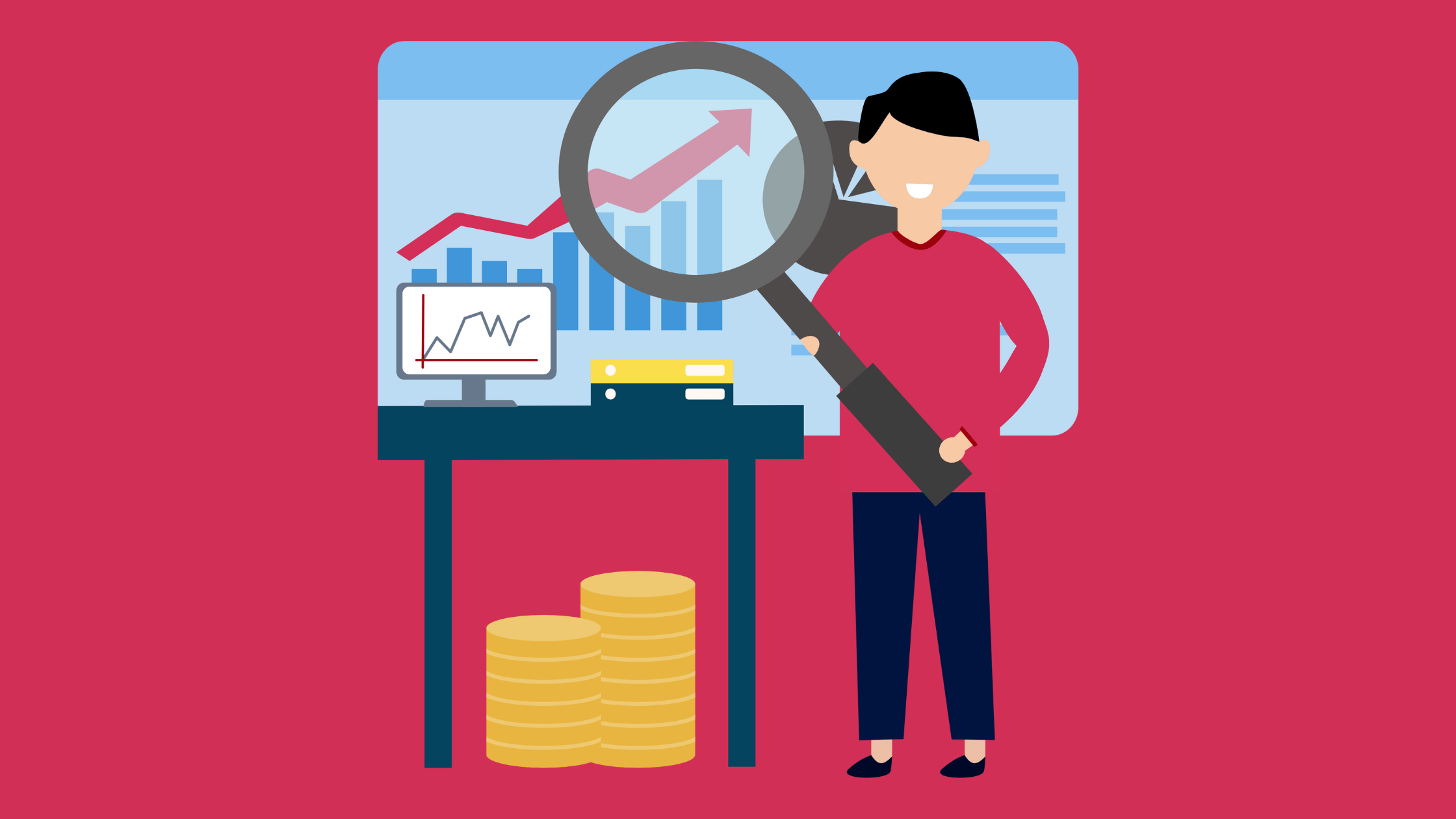Often considered “the sexiest job of the 21st century,” data science continues to be in the top ranks of the most demanded careers. A career in data science means that you’ll work with data analysis, programming, mining, and a whole bunch of statistics. Yeah, I know! Sexy for nerds.
According to the U.S. Bureau of Labor Statistics, Employment of data scientists is projected to grow 35 percent from 2022 to 2032. Much faster than the average for all occupations! But a career in data science is not for everyone. This field requires high intellect and a love for numbers, and if you are a fit, this article is for you.
This guide will help you understand the nuances of data science, the career options in it, and the path to becoming a data scientist. But first, let’s see:
Why is a Career in Data Science so Lucrative?
Businesses today rely on data like never before. This reliance creates a huge demand for people who can make sense of all that information. That’s where data scientists come in—they’re the ones who can turn raw data into valuable insights that businesses use to make smart decisions.
But what makes a career in data science so appealing? Well, for starters, it comes with a very handsome salary package and solid job security. Companies are always on the lookout for skilled data professionals like you! Plus, the world is constantly transforming into a big ball of 7 billion data maniacs. So, there’s always a need for people who can handle data like a pro.
Beyond the financial and stability aspects, data science is a field that operates in almost every sector. Whether you’re interested in healthcare, finance, marketing, or something else, data science has a place for you.
Is Data Science for you?
It’s great if you’re into problem-solving and numbers and love digging into data to find answers. The life of a data scientist revolves around asking ‘Why?’ and playing with statistics. If you, too, are naturally curious and love playing with complex numbers, data science might just be your thing.
But let’s be real—it’s not all rainbows and unicorns. Data science is a fairly difficult career to have. The tech world moves fast, and you’ll need to keep learning new skills to keep up. Do you remember any kid whose favorite subject used to be Maths? No, right? Well, data science asks you to love mathematics, numbers, and statistics.
I may have exaggerated a bit, but not much! In short, a career in data science is as sexy as it is hard.
Top 5 Roles for a Career in Data Science
1. Data Scientist
Data scientists are data maniacs who use their expertise to extract valuable insights and solve complex problems. Their primary responsibilities revolve around collecting, cleaning, and analyzing large datasets to uncover patterns, trends, and correlations.
Key duties of a data scientist include:
- Data Analysis: Identifying trends, patterns, and relationships within datasets.
- Model Development: Creating predictive models using machine learning algorithms.
- Problem-Solving: Addressing business challenges by interpreting data insights.
- Communication: Presenting findings to non-technical stakeholders in a comprehensible manner.
The skillset required for data scientists includes proficiency in programming languages like Python or R, statistical analysis, machine learning, data visualization, and domain knowledge in the industry they work in.
Industries such as technology, finance, healthcare, and e-commerce widely seek data scientists due to their ability to drive strategic decision-making based on data-driven insights.
2. Data Analyst
Data analysts focus on interpreting data to uncover actionable insights, but their roles differ from data scientists. They deal more with descriptive analytics, concentrating on understanding what happened in the past or is currently happening.
Differences between a data analyst and a data scientist include:
- Scope of Analysis: Data analysts focus on descriptive and diagnostic analysis, whereas data scientists also delve into predictive and prescriptive analytics.
- Technical Skills: Data analysts use tools like Excel, SQL, and Tableau and possess strong SQL querying skills.
- Data Interpretation: They interpret data to provide clear, concise reports that help businesses understand trends and make informed decisions.

Source: Data Science Dojo
3. BI Analyst (Business Intelligence Analyst)
BI analysts focus on translating data into insights that guide business decisions. They design and maintain dashboards, reports, and visualizations to provide actionable intelligence to stakeholders.
Their role involves:
- Interpreting Data: Understanding business needs and translating them into data-driven insights.
- Tools and Techniques: Proficiency in BI tools (such as Power BI and Tableau) and SQL for data querying.
- Visualization Skills: Creating intuitive and easy-to-understand dashboards for stakeholders.
4. Data Engineer
Data engineers focus on building and maintaining the infrastructure necessary for data generation, storage, and processing. They design, develop, and optimize data pipelines and architectures to support data-driven applications.
Responsibilities include:
- Data Infrastructure: Building and managing large-scale data systems.
- Data Pipelines: Creating efficient processes to collect, clean, and transform data.
- Technical Skills: Proficiency in programming languages like Python and Java, knowledge of databases, and big data tools like Hadoop or Spark.
5. Data Architect
Data architects play a crucial role in designing and maintaining robust data systems. They focus on creating blueprints for data management, ensuring data integrity, security, and accessibility.
Their responsibilities include:
- Designing Data Systems: Creating data models and structures for efficient data storage and retrieval.
- Collaboration: Working with stakeholders to understand business requirements and translate them into data architecture.
- Skills Needed: Proficiency in database technologies, data modeling, cloud platforms, and an understanding of business needs.
Also Read: How to Build a Career in AI and Machine Learning?
Skills You Need To Build a Career in Data Science
For a successful career in data science, you’ll need a combination of technical, analytical, and soft skills. Here’s a breakdown of the essential skill set:
1. Programming Languages (Python, R):
As it is a technical role, expect to learn some (or more) coding. Data Science, in general, requires you to learn programming languages like Python and R. These languages are vital for data manipulation, analysis, modeling, and visualization. Mastery of these tools enables efficient handling and interpretation of data sets.
2. Statistical Analysis and Mathematics:
This might sound painful for non-nerds, but a solid foundation in statistics, linear algebra, and calculus is crucial. Understanding statistical principles aids in interpreting data, validating hypotheses, and building predictive models. Mathematical knowledge supports the comprehension of machine learning algorithms and their underlying concepts.
3. Data Wrangling and Preprocessing:
Once you learn to model, manipulate, and interpret data, the next step is to learn cleaning. The ability to clean, structure, and preprocess data is a core fundamental of a career in data science.
Handling missing values, transforming data, and ensuring data quality are essential steps before analysis. Proficiency in data manipulation techniques ensures accurate and reliable insights.
4. Machine Learning Techniques:
Understanding various machine learning algorithms and their applications is, too, crucial. A skillset in model evaluation, selection, and validation is necessary for building robust predictive models. Knowledge of algorithms such as regression, classification, clustering, and their practical implementations is crucial.
5. Data Visualization and Communication:
The last on our list – You need a mad proficiency in data visualization tools and techniques, such as Matplotlib, Seaborn, or ggplot in R. The ability to create meaningful visual representations of data aids in conveying insights effectively to both technical and non-technical stakeholders.
But why? Because you, as a data scientist, can get information out of raw data but not others. Hence, you need to present and communicate that data in a visual format for the masses.
How to Land a Job in Data Science
After building your skills in programming, statistics, data wrangling, machine learning, and communication, follow these steps to land your first data science job:
1. Showcase Your Skills through Projects:
Use your newly learned skills in programming and statistical analysis to create tangible projects. Apply these skills to real datasets, developing predictive models, performing analysis, and visualizing insights.
Document these projects in a portfolio that highlights your technical abilities and problem-solving approach. Host all the projects on GitHub or your portfolio site.
2. Gain Practical Experience:
Apply your skills in real-world scenarios by seeking internships, volunteer roles, or freelance projects. Practical experience enhances your understanding of applying data science methodologies to actual business challenges.
Although good projects act as practical experience, too, you need more than that. Use your projects to get internship/freelance projects and build your portfolio stronger.
3. Network with Purpose:
Engage with professionals in the data science community. Use online platforms like LinkedIn, attend industry meetups, and actively participate in forums or groups related to data science.
Networking exposes you to valuable insights, mentorship, and potential job opportunities. You never know who might offer you the first opportunity.
4. Apply and Prepare for Interviews:
Customize your resume and cover letter to highlight relevant skills and experiences obtained through projects and practical work. Apply wherever you can, and be prepared to discuss your projects in detail. Learn to demonstrate your analytical thinking and data skills well.
Note: Know that the traditional job applications don’t work anymore. You need to learn cold outreach and networking to cut through the masses and get that interview.
6. Stay Updated and Learn Continuously:
Doesn’t matter if you get the job or not. Data Science is a field that asks you to be a student forever. The world is changing, and it is changing fast. To cope and be relevant in the industry, you need to keep learning.
Stay updated with all the industry updates and learn anything new that comes up. If not, polish your current skillset as much as you can.
Do You Want A Career in Data Science?
Do not focus on the salary of data scientists or the title of ‘The Sexiest Job of 21st Century’. My last piece of advice for you is to choose data science, or any career, only if you feel it is suited for you.
A career in data science asks you to love numbers, be proficient in calculus and statistics, programming, and be a student forever. If that excites or entices you, that’s well and good. If not, there are hundreds of other options to pursue.











Leave feedback about this